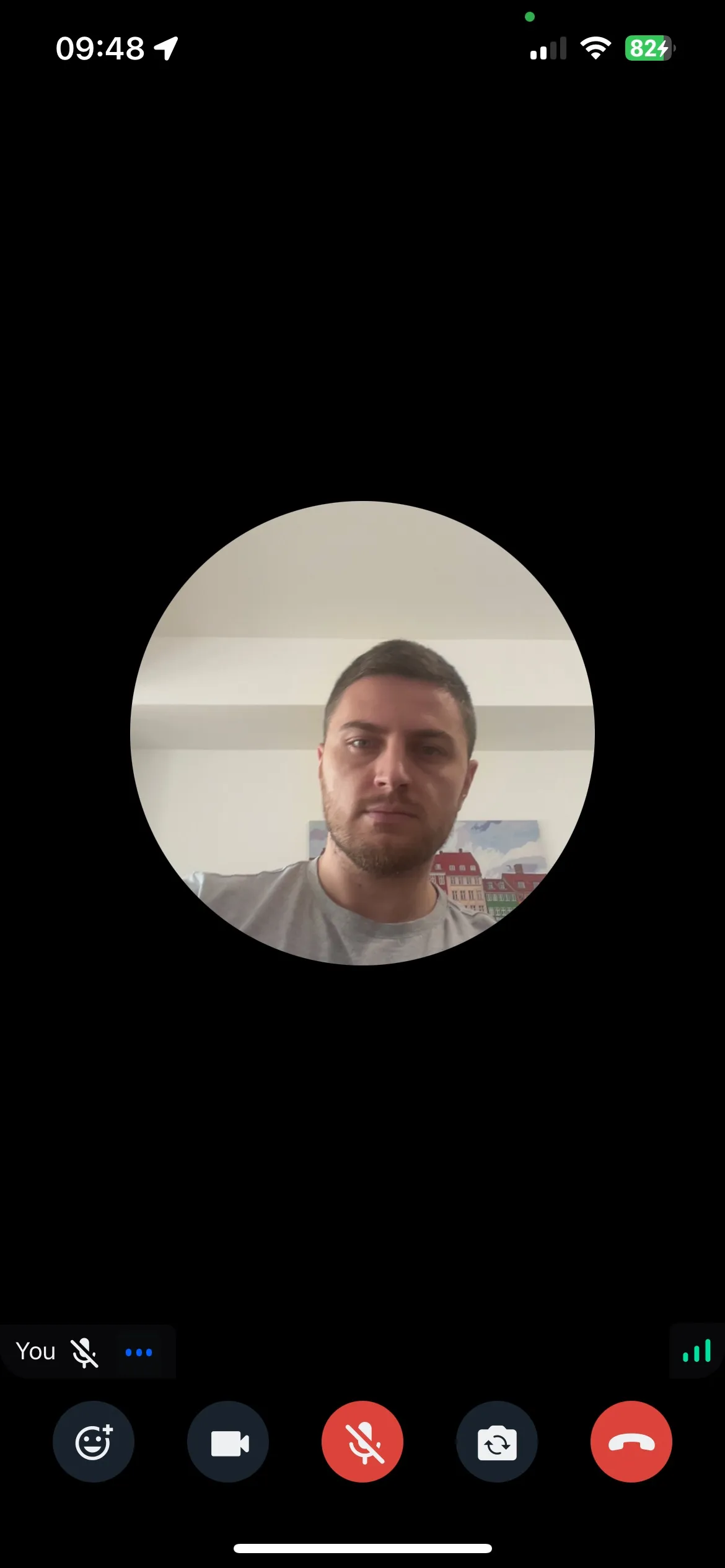import { View, StyleSheet } from "react-native";
import { RTCView } from "@stream-io/react-native-webrtc";
const CustomVideoRenderer = ({ participant }: VideoRendererProps) => {
const { videoStream } = participant;
return (
<View style={styles.background}>
<RTCView
streamURL={videoStream?.toURL()}
style={styles.stream}
objectFit="cover"
/>
</View>
);
};
const styles = StyleSheet.create({
background: {
...StyleSheet.absoluteFillObject,
alignItems: "center",
justifyContent: "center",
},
stream: {
height: 250,
width: 250,
borderRadius: 125,
},
});Video Renderer
The video renderer is the most essential UI component in a video call screen, which renders participant’s video in real-time.

It is expected that the default component may not meet all the requirements of your design/app. Therefore, we will look into ways, how to customize/create a video renderer in this tutorial.
Custom Video Renderer
You can customize the video renderer by implementing your own video renderer component and passing it to the CallContent component.

Final Steps
Now this can be passed to the VideoRenderer prop of the CallContent component, as follows:
import {
Call,
CallContent,
StreamCall,
} from "@stream-io/video-react-native-sdk";
const VideoCallUI = () => {
let call: Call;
// your logic to create a new call or get an existing call
return (
<StreamCall call={call}>
<CallContent VideoRenderer={CustomVideoRenderer} />
</StreamCall>
);
};To get the participant data, you can use the following hooks from the useCallStateHooks:
useParticipantshook that provides all the necessary details of all the participants.useRemoteParticipantshook that provides all the details of the participants other than the local participant.useConnectedUseroruseLocalParticipantprovides the details of the local or connected participant.